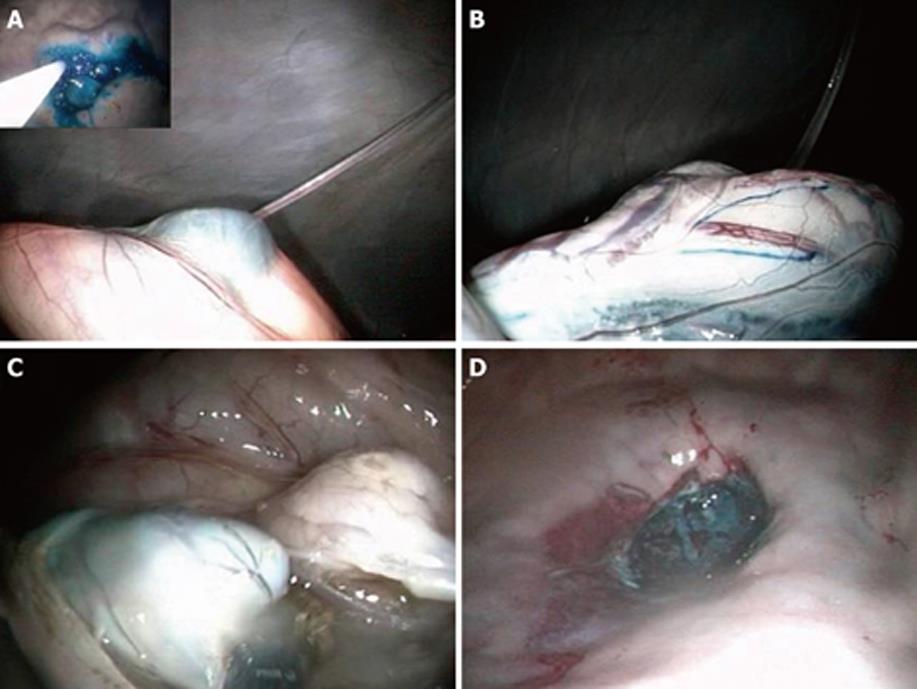Copyright
©2010 Baishideng.
World J Gastrointest Surg. Jun 27, 2010; 2(6): 203-206
Published online Jun 27, 2010. doi: 10.4240/wjgs.v2.i6.203
Published online Jun 27, 2010. doi: 10.4240/wjgs.v2.i6.203
Figure 1 Lymphatic mapping of the stomach.
To allow for a straight approach to the stomach and its lymphatic basin by the natural orifice transluminal endoscopic surgery (NOTES) endoscope, a transvaginal access was used. A space in the retroperitoneum was made by blunt dissection so that the double-channel endoscope could be advanced through the retroperitoneum and into the peritoneum proper. A: The intraperitoneal NOTES endoscope observes lymphatic mapping as performed by the intraluminal gastroscope on either side of the pseudolesion (see insert). One point five millilitre of methylene blue dye was used for each submucosal injection; B: The blue stained efferent lymphatic channels from these injection sites are seen to run to and then along the greater curvature; C: Torque on the gastroscope allows these channels to be followed by fully exposing both the stomach’s posterior surface and allowing access of the NOTES endoscope to the retrogastric space. A single sentinel node is found in this case just behind the pylorus. The faint blue tinge of the node as it takes up the dye is evident. An excisional biopsy of the node was performed and the specimen retrieved to the exterior by grasping and withdrawing the entire endoscope; D: View of the stomach, after removal of a 1.5 cm specimen by endoscopic submucosal dissection.
- Citation: Asakuma M, Cahill RA, Lee SW, Nomura E, Tanigawa N. NOTES: The question for minimal resection and sentinel node in early gastric cancer. World J Gastrointest Surg 2010; 2(6): 203-206
- URL: https://www.wjgnet.com/1948-9366/full/v2/i6/203.htm
- DOI: https://dx.doi.org/10.4240/wjgs.v2.i6.203









